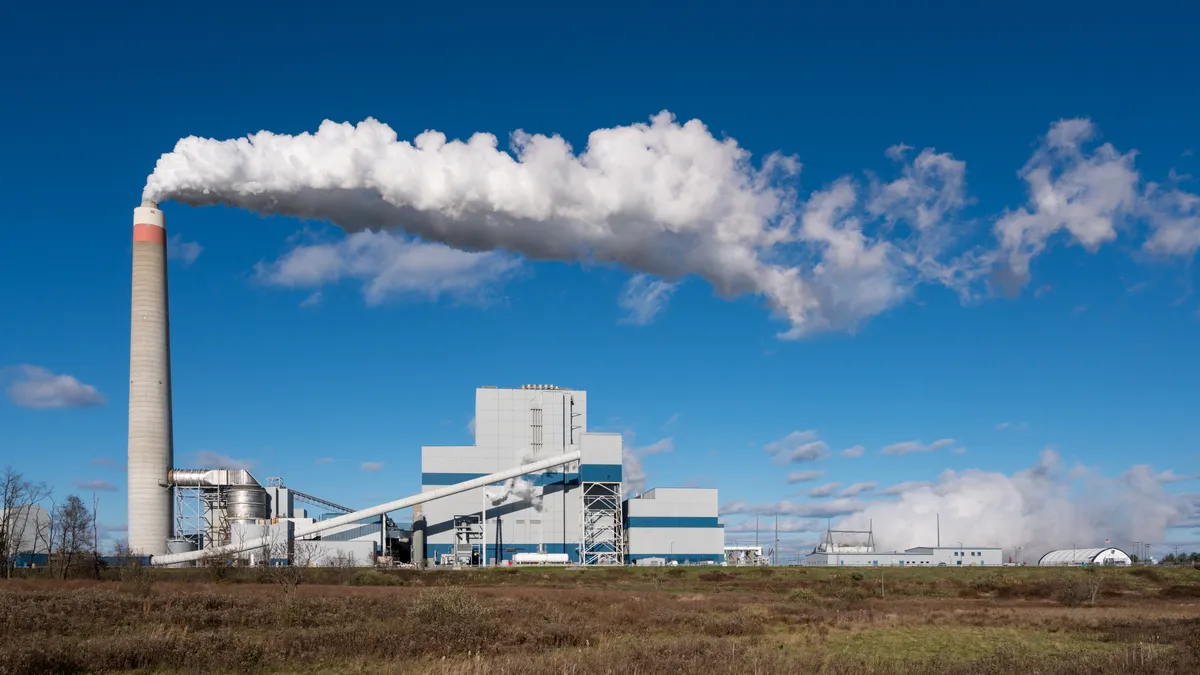Dive Brief:
- The North American Electric Reliability Corp. has greatly underestimated the amount of coal-fired generation that will retire from 2022 to 2030, potentially threatening the reliability of the nation’s electric grid, according to America’s Power, a group that advocates for the coal industry.
- Capacity at coal plants that have announced plans to retire over the next nine years is “four times greater than the retirements NERC assumes,” the group’s President and CEO Michelle Bloodworth said in an email. In an Aug. 16 letter, America’s Power urged NERC to update its assessments and examine coal industry rules issued by the U.S. Environmental Protection Agency around air pollution, wastewater and other topics, as an “emerging issue.”
- NERC officials say their reliability assessments use confirmed retirements, as opposed to public announcements, and that they are aware more coal retirements are expected. The reliability organization said it has already “called out concerns about the pace of traditional generation retirements.”
Dive Insight:
America’s Power says NERC is underestimating retiring coal plant capacity by about 68 GW.
The coal group says it relies on a database maintained by Energy Ventures Analysis which tracks announced retirements based on public statements by plant owners. Those figures show about 93 GW of retirements expected during the 2022-2030 stretch. Conversely, the group says NERC’s 2021 Long-Term Reliability Assessment, or LTRA, includes only about 25 GW of confirmed retirements.
NERC’s 2021 LTRA concluded electric grid instability is being driven by the shuttering of older plants and the addition of new variable resources, combined with extreme weather.
“We understand NERC’s practice is to base its long-term assessments on confirmed retirements,” America’s Power wrote in its letter. But due to “the huge number of confirmed and unconfirmed retirements during the remainder of this decade,” the group said NERC should update its generation retirement scenarios.
America’s Power also identified more than a half dozen EPA standards and rules it says threaten the coal sector and asked NERC to examine the issue. Those include coal combustion residual rules, wastewater limits and regional haze implementation plans that will require emissions controls on coal plants.
“We expect EPA to continue implementing existing rules and to issue new rules that impact the coal fleet. Unless moderated, we estimate these rules, taken together, will cause coal retirements to rise sharply during 2026-2028 and, therefore, exacerbate resource adequacy challenges in certain regions of the country,” America’s Power wrote.
NERC officials say they recognize the risk to reliability and are updating future assessments.
“In general, NERC has called out concerns about the pace of traditional generation retirements relative to the development and deployment of replacement resources,” the organization said in a statement. The group says it has been evaluating the risk to reliability posed by accelerated generation retirements since it published an assessment in 2018.
“NERC is actively updating this assessment and it will be included in the forthcoming 2022 Long-term Reliability Assessment,” the group said.
Conservation advocates say America’s Power letter misses the point, and the fastest way to shore up reliability is the addition of more clean energy resources.
“NERC found a substantial threat to reliability comes from extreme heat and drought, which is worsening because burning coal is changing our climate,” Bill Corcoran, the director of Sierra Club’s Beyond Coal Campaign, said in a statement.
Along with renewables and storage, Corcoran called for additional investment in energy efficiency to reduce building waste.
“Additionally, new electric transmission capacity connected to clean energy will make the grid more reliable, reduce our reliance on fossil fuels, and limit the worst impacts of our changing climate,” he said. “Coal is the problem, not the solution.”














